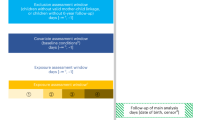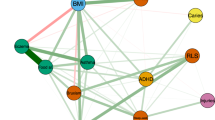Abstract
Background:
Cognitive impairment has been documented in adult diabetes but is unclear in pediatric diabetes. No study had been conducted to explore the relationship between attention-deficit/hyperactivity disorder (ADHD) and diabetes. Using a population-based data set, we aimed to examine the association between ADHD and a prior diagnosis of diabetes mellitus (DM) in Taiwan.
Methods:
A total of 4,302 patients with ADHD were selected as cases and 21,510 randomly selected subjects as controls. We used conditional logistic regression to calculate the odds ratio (OR) for having previously received a diagnosis of DM between subjects with and without ADHD.
Results:
In this study, 116 of the 25,812 sampled subjects (0.5%) had received a diagnosis of DM prior to their index date. Subjects with ADHD had a higher proportion of prior DM diagnoses than controls (0.9% vs. 0.4%, P < 0.001). After adjusting for age, sex, index year, geographic location, and obesity, ADHD was significantly associated with a prior diagnosis of type 2 DM (OR = 2.75, 95% confidence interval (CI) = 1.82–4.16). However, no significant association was observed between ADHD and type 1 DM.
Conclusion:
The findings suggest that ADHD was associated with a previous diagnosis of type 2 DM.
Similar content being viewed by others
Log in or create a free account to read this content
Gain free access to this article, as well as selected content from this journal and more on nature.com
or
References
Polanczyk G, de Lima MS, Horta BL, Biederman J, Rohde LA . The worldwide prevalence of ADHD: a systematic review and metaregression analysis. Am J Psychiatry 2007;164:942–8.
Biederman J . Attention-deficit/hyperactivity disorder: a selective overview. Biol Psychiatry 2005;57:1215–20.
Millichap JG . Encephalitis virus and attention deficit hyperactivity disorder. J R Soc Med 1997;90:709–10.
Needleman HL . Lead and impaired abilities. Dev Med Child Neurol 1982;24:196–8.
Huizink AC, Mulder EJ . Maternal smoking, drinking or cannabis use during pregnancy and neurobehavioral and cognitive functioning in human offspring. Neurosci Biobehav Rev 2006;30:24–41.
Knopik VS, Sparrow EP, Madden PA, et al. Contributions of parental alcoholism, prenatal substance exposure, and genetic transmission to child ADHD risk: a female twin study. Psychol Med 2005;35:625–35.
Lindström K, Lindblad F, Hjern A . Preterm birth and attention-deficit/hyperactivity disorder in schoolchildren. Pediatrics 2011;127:858–65.
Mick E, Biederman J, Prince J, Fischer MJ, Faraone SV . Impact of low birth weight on attention-deficit hyperactivity disorder. J Dev Behav Pediatr 2002;23:16–22.
Spencer T, Biederman J, Wilens T, Guite J, Harding M . ADHD and thyroid abnormalities: a research note. J Child Psychol Psychiatry 1995;36:879–85.
Desrocher M, Rovet J . Neurocognitive correlates of type 1 diabetes mellitus in childhood. Child Neuropsychol 2004;10:36–52.
Gaudieri PA, Chen R, Greer TF, Holmes CS . Cognitive function in children with type 1 diabetes: a meta-analysis. Diabetes Care 2008;31:1892–7.
Type 2 diabetes in children and adolescents. American Diabetes Association. Diabetes Care 2000;23:381–9.
Levitt Katz LE, Swami S, Abraham M, et al. Neuropsychiatric disorders at the presentation of type 2 diabetes mellitus in children. Pediatr Diabetes 2005;6:84–9.
Block WM, Putzer GJ, Jaramillo JR . Children with type 2 diabetes mellitus and the prevalence of psychiatric disorders. South Med J 2010;103:1214–8.
Malone JI, Hanna S, Saporta S, et al. Hyperglycemia not hypoglycemia alters neuronal dendrites and impairs spatial memory. Pediatr Diabetes 2008;9:531–9.
Malone JI, Hanna SK, Saporta S . Hyperglycemic brain injury in the rat. Brain Res 2006;1076:9–15.
Vlassara H, Brownlee M, Cerami A . Excessive nonenzymatic glycosylation of peripheral and central nervous system myelin components in diabetic rats. Diabetes 1983;32:670–4.
Fujioka M, Okuchi K, Hiramatsu KI, Sakaki T, Sakaguchi S, Ishii Y . Specific changes in human brain after hypoglycemic injury. Stroke 1997;28:584–7.
Auer RN, Olsson Y, Siesjö BK . Hypoglycemic brain injury in the rat. Correlation of density of brain damage with the EEG isoelectric time: a quantitative study. Diabetes 1984;33:1090–8.
Ryan CM . Why is cognitive dysfunction associated with the development of diabetes early in life? The diathesis hypothesis. Pediatr Diabetes 2006;7:289–97.
Sima AA, Kamiya H, Kamiya H, Li ZG . Insulin, C-peptide, hyperglycemia, and central nervous system complications in diabetes. Eur J Pharmacol 2004;490:187–97.
Stumvoll M, Goldstein BJ, van Haeften TW . Type 2 diabetes: principles of pathogenesis and therapy. Lancet 2005;365:1333–46.
Aye T, Levitsky LL . Type 2 diabetes: an epidemic disease in childhood. Curr Opin Pediatr 2003;15:411–5.
Bruehl H, Wolf OT, Sweat V, Tirsi A, Richardson S, Convit A . Modifiers of cognitive function and brain structure in middle-aged and elderly individuals with type 2 diabetes mellitus. Brain Res 2009;1280:186–94.
Ryan CM, Geckle M . Why is learning and memory dysfunction in Type 2 diabetes limited to older adults? Diabetes Metab Res Rev 2000;16:308–15.
Awad N, Gagnon M, Messier C . The relationship between impaired glucose tolerance, type 2 diabetes, and cognitive function. J Clin Exp Neuropsychol 2004;26:1044–80.
Hsu JL, Chen YL, Leu JG, et al. Microstructural white matter abnormalities in type 2 diabetes mellitus: a diffusion tensor imaging study. Neuroimage 2012;59:1098–105.
Novak V, Last D, Alsop DC, et al. Cerebral blood flow velocity and periventricular white matter hyperintensities in type 2 diabetes. Diabetes Care 2006;29:1529–34.
Niwa H, Koumoto C, Shiga T, et al. Clinical analysis of cognitive function in diabetic patients by MMSE and SPECT. Diabetes Res Clin Pract 2006;72:142–7.
Duncan J, Owen AM . Common regions of the human frontal lobe recruited by diverse cognitive demands. Trends Neurosci 2000;23:475–83.
Goldman-Rakic PS . Topography of cognition: parallel distributed networks in primate association cortex. Annu Rev Neurosci 1988;11:137–56.
Makris N, Meyer JW, Bates JF, Yeterian EH, Kennedy DN, Caviness VS . MRI-Based topographic parcellation of human cerebral white matter and nuclei II. Rationale and applications with systematics of cerebral connectivity. Neuroimage 1999;9:18–45.
Rovet J, Alvarez M . Attentional functioning in children and adolescents with IDDM. Diabetes Care 1997;20:803–10.
Altfas JR . Prevalence of attention deficit/hyperactivity disorder among adults in obesity treatment. BMC Psychiatry 2002;2:9.
Bruehl H, Sweat V, Tirsi A, Shah B, Convit A . Obese adolescents with type 2 diabetes mellitus have hippocampal and frontal lobe volume reductions. Neurosci Med 2011;2:34–42.
Dou JT, Chen M, Dufour F, Alkon DL, Zhao WQ . Insulin receptor signaling in long-term memory consolidation following spatial learning. Learn Mem 2005;12:646–55.
Galéra C, Côté SM, Bouvard MP, et al. Early risk factors for hyperactivity-impulsivity and inattention trajectories from age 17 months to 8 years. Arch Gen Psychiatry 2011;68:1267–75.
Andrade SE, Lo JC, Roblin D, et al. Antipsychotic medication use among children and risk of diabetes mellitus. Pediatrics 2011;128:1135–41.
Carol J, Buck CJ . W.B. Saunders 2001 ICD-9-CM, volumes 1, 2, and 3. Singapore: Elsevier (Singapore), 2003:637, 139–40, 368–72.
Hennessy S, Bilker WB, Berlin JA, Strom BL . Factors influencing the optimal control-to-case ratio in matched case-control studies. Am J Epidemiol 1999;149:195–7.
Acknowledgements
This study is based in part on data from the National Health Insurance Research Database provided by the Bureau of National Health Insurance, Department of Health, Taiwan and managed by the National Health Research Institutes. The interpretations and conclusions contained herein do not represent those of the Bureau of National Health Insurance, Department of Health, or the National Health Research Institutes.
Author information
Authors and Affiliations
Corresponding author
Rights and permissions
About this article
Cite this article
Chen, HJ., Lee, YJ., Yeh, G. et al. Association of attention-deficit/hyperactivity disorder with diabetes: a population-based study. Pediatr Res 73, 492–496 (2013). https://doi.org/10.1038/pr.2013.5
Received:
Accepted:
Published:
Issue date:
DOI: https://doi.org/10.1038/pr.2013.5
This article is cited by
-
Convergent selective signaling impairment exposes the pathogenicity of latrophilin-3 missense variants linked to inheritable ADHD susceptibility
Molecular Psychiatry (2022)
-
Utility of continuous performance test (MOXO-CPT) in children with pre-dialysis chronic kidney disease, dialysis and kidney transplantation
Journal of Nephrology (2022)
-
Large-scale genetic investigation reveals genetic liability to multiple complex traits influencing a higher risk of ADHD
Scientific Reports (2021)
-
ICP-MS Assessment of Hair Essential Trace Elements and Minerals in Russian Preschool and Primary School Children with Attention-Deficit/Hyperactivity Disorder (ADHD)
Biological Trace Element Research (2020)
-
Consortium on Vulnerability to Externalizing Disorders and Addictions (cVEDA): A developmental cohort study protocol
BMC Psychiatry (2020)



